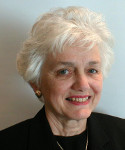Share
“We believe you deserve to heal from addiction too.”
from brochure of St. Joseph’s Addiction Treatment & Recovery Centers’ Family Program, Saranac Lake, New York

When we talk about advances in treatment, what are we calling “advances,” and who are the intended beneficiaries? Are we remembering the long-time, but still present fear, confusion, and panic that daily controls the lives of addicted people’s loved ones, including the youngest children? They too are suffering intensely from living in families with active addiction, and they too need help to recover and heal from the slings and arrows projected on them for as long as they can remember by this painful and baffling disease. In order not to have early recovery sabotaged by untreated, angry, untrusting, and fearful family members, the addicted parties also need for their families, including children, to receive adequate education and support. All need to know what addiction has done to them and to each other, and to understand that each must go through their own recovery process for family healing to happen.
While multiple treatment modalities for treating addicted individuals have been introduced over the past decade or two, research has also come forward in trauma, depression, PTSD, and attachment disorders. The Adverse Childhood Experiences (ACE) study has deepened our understanding of lifelong negative consequences that grow out of the chronic emotional stress experienced by children living with parental addiction and other hostile and high-stress home environments. Finally, we have learned how trauma in the home can leave children frightened, confused, lonely, and sad, undermining their ability to learn to love and regulate the very emotions that are needed to grow into resilient, balanced people. The ACE study’s broad findings have also reminded us that children of addicted parents are the most at risk for developing addiction and/or mental health disorders. That growing knowledge is helping to reassess what is needed for addicted individuals and their loved ones to recover and thrive, as many of them grew up in addicted family systems.
We have known for decades that addiction tends to run in families, and that it moves from generation to generation engendering trauma, the effects of which travel with addiction to the next generation. Early treatment programs focused on helping clients to get and stay sober—a major task admittedly. But when clients also wanted to discuss the pain, rage, and sadness they felt from family relationships as they began to address their addiction, they were blocked from doing so in the belief that it could trigger relapse, and too often they gained steady sobriety, but not emotional sobriety. This was especially harmful for women who often had been sexually and emotionally abused and carried a deep shame that was blocking their progress in treatment, sending them into depression and relapse. So, looking at desired outcomes of advances in treatment, what are we looking at and who needs to be the beneficiaries of these advances?
Addicted people need to reconnect to healing families that understand the recovery struggle they are experiencing in early sobriety, if reconnection is going to be possible. From the family perspective, where do addicts fit in? Even just twenty years ago, addicts were still seen as problems, and family members and others thought that if they could just get their addicted loved ones to sober up, they—the family members—would magically get better, too. But better from what, exactly? And if addiction and trauma travel together from generation to generation, do some family members become sick living with addiction or is addiction a symptom of families that are hurting? Is addiction, at least at times, a cry for help not only from addicts, but from members of their families who are carrying pain the system is not addressing?
Over the past couple of decades, interventions have been more sensitive in helping not only addicts to get help, but family members as well. Additionally, addiction treatment now routinely includes family treatment, although too often “family” still means adults coming for education about addiction treatment and how to support their addicted loved ones through early recovery. However, supporting loved ones is what they have been doing for years, and too often it has made them sick. Certainly the growing awareness of the effects of trauma on the capacity to recover from active addiction, or from living with it, gives the field a broader understanding of why living with any kind of abuse, neglect, addiction, or dysfunction is harmful and needs to be addressed.
Perhaps the mindfulness movement is addressing just this intuitively, and it is proving to be a beneficial advance in the treatment of addiction and healing needed for recovery. The good news is that treating trauma is increasingly being integrated into addiction treatment issues to facilitate recovery for individuals whose childhood trauma is affecting their adult lives, whether they are primarily in treatment for addiction or for PTSD and related problems caused by growing up in addicted families.
Dr. Claudia Black offers an encouraging perspective to this discussion:
The pioneering work that occurred in the 1970s and 1980s, recognizing and addressing young and adult children who are or have been raised in families impacted by addiction, has been life changing for hundreds of thousands of people. Decades later, with an understanding of trauma (specifically developmental trauma), working with young or adult children means it is necessary to develop programs, be they prevention or intervention, that have a trauma lens to the delivery of services. While children raised in addictive homes are more likely than others to experience or to be witness to blatant traumas such as physical and sexual abuse and severe neglect, they also live the lives of subtler traumatizing effects. They live with that which occurs when living in a chronic state of fear and shame due to the blaming, criticizing, unrealistic expectations, rigidity and controlling behavior, enmeshed behavior, inconsistency, and unpredictability that characterizes addictive families.
We know that some children show more resiliency than others, and that there are variables that influence the impact of family dynamics. The younger a child is at the onset of that which is traumatizing; when the perpetrator is someone who is supposed to be loving towards you, such as a primary caregiver; and whether or not there are previous stressors in a person’s life when subject to outside stressors are critical factors that create greater vulnerability to the chronic stress that permeates addicted families. With both prevention and intervention therapy, mindfulness practices are critical. There are multiple models of mindfulness games and practices available to people of all ages. . . . this is vital as it helps to calm the emotional dysregulation that is a given when raised with the traumas of addiction. They give young people coping skills when they often need to remain living in a volatile environment. They facilitate a nervous system regulation that makes it easier for them to think through and problem solve situations. Long-time practices of experiential modalities today are becoming evidence-based practices. We have always been doing trauma work with our clients; today we understand why what we did was so effective. We also have more tools available to us, and today we are blessed in many cases to have science behind our work (personal communication, March 4, 2019).
Are we finally returning to improved versions of the child-centered family programs from the early 1980s? Many kids’ programs these days are really child-centered family programs. Much in the spirit of Celebrating Families!, Strengthening Families, and the Hazelden Betty Ford Children’s Program, work with children, parents, grandparents, and foster parents is growing through separate work with the children and then bringing the two together to work on family healing.
Patients benefit in many ways. Counselors teach children about the brain disease of addiction in age-appropriate ways, helping them to separate the disease from the loved ones who have been consumed by it. Patients marvel at the understanding by the children, especially when the kids share—via art, stories, and their words—how addiction has hurt everyone in the family.
After such programs are completed, adults generally share that they have much less guilt and shame because the kids have made it clear how much they love their parents and want them to get better. These folks leave treatment and head back to families that already understand that a path to healing has begun for all of them. Helping the children to heal, and helping the adults to address the impact childhood trauma has had on their lives, may well be the greatest advance in treatment yet, because it has the best chance of interrupting the generational transmission of trauma and addiction.
And in Saranac Lake, New York, a family program is providing a residential, two-generation treatment program—another advance on healing the family!
Acknowledgments: Thanks to Claudia Black, PhD, Tian Dayton, PhD, and Jerry Moe, MA, for their insights in this discussion of advances in family treatment.
About Me
Sis Wenger is the president and CEO of NACoA.













 Counselor Magazine is the official publication of the California Association of Addiction Programs and Professionals (CCAPP). Counselor offers online continuing education, article archives, subscription deals, and article submission guidelines. It has been serving the addiction field for more than thirty years.
Counselor Magazine is the official publication of the California Association of Addiction Programs and Professionals (CCAPP). Counselor offers online continuing education, article archives, subscription deals, and article submission guidelines. It has been serving the addiction field for more than thirty years.